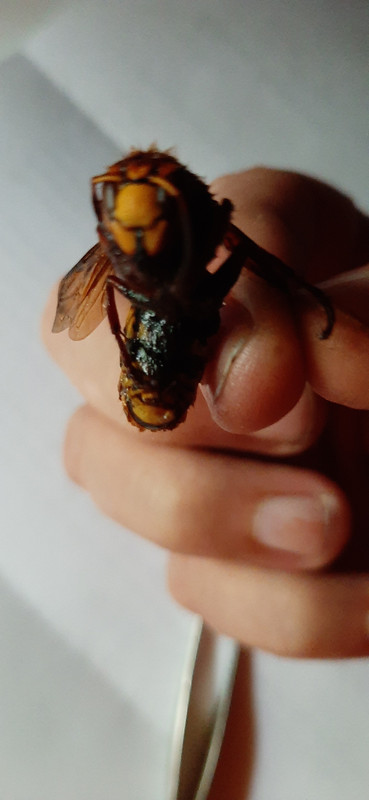Posted on 12/27/2022 9:40:07 AM PST by Red Badger
Invasive species have a notorious ability to spread rapidly through unprepared ecosystems, wreaking havoc along their way.
The Asian hornet (Vespa velutina), is no exception, expanding its habitat by more than 80 kilometers (50 miles) a year while preying on honeybees, hoverflies and other insects.
Nearly 20 years ago, the beefy little stingers – often called 'murder hornets' – made their debut appearance in Europe, eventually jumping the channel where they were spotted on UK soil in 2016.
Genetic analysis has now revealed their rapid and widespread infestation across the west was likely the result of just one wasp making the jump to France from China in 2004.
"Our research has revealed the remarkable potential for population expansion of eusocial insects in invaded areas, even when original genetic diversity is extremely low," says University College Cork ecologist Simon Harrison.
University College Cork zoologist Eileen Dillane and team analyzed three genes from the first recorded arrival of the Asian hornet in Ireland in April 2021, and compared them to sequences of wasps found across mainland Europe. All of the genes were mitochondrial genes, which are passed on along the female line.
"Earlier work had demonstrated that Asian hornets in Europe apparently shared the same genetic lineage, based on studies of a single gene. We took this a step further and looked at two additional genes which would be more sensitive in detecting variation within the invasive population," explains Dillane.
The results indicated the maternal wasp line found in Dublin was the same seen across all of Europe.
"Our results, along with those of other groups, suggest that the entire population of V. velutina in Europe, now potentially numbering many millions of individuals, are descended from a single mated queen arriving from China some 15–20 years ago," the team writes in their paper.
In its native South-East Asia the Asian hornet preys on Asian honeybees that have a complex warning and prey defense system. They'll mob an attacking wasp in a bee ball, overheating it to death. Unfortunately, European honeybees lack these defensive behaviors, making them easy targets for the wasps, leading to concerns for pollination services across the continent.
While the Asian wasps have a nasty sting that some people can have allergic reactions to, they're luckily not aggressive towards humans, unlike the European wasp.
The very low genetic diversity within the European population of V. velutina could provide a potential for biological control, Dillane and colleagues note.
Unfortunately, the researchers also warn, "climate change is likely to increase the threat of a successful invasion in the future, so vigilance against this species must be maintained."
Their research was published in the Journal of Hymenoptera.
They ‘get’ it with bugs, but don’t get it with people.
Of course there’s a gratuitous bogus climate change reference.
#($&&^
LOL, because it’s true.
A hornet is bad, but millions of “them” is just dandy...

skeerd the hell out of me, Euro Giant Hornet...
Its always a woman, isn’t it?
Or I should say, they’re describing the giant Asian hornet and calling it by the wrong name.
“likely” means “0”.
10 replies in and nobody has suggested nuking it from orbit?
pretty much... i was sitting on the john and it sounded like a B17 when it flew in
Africanized bees, big problem.
Africanized people, no problem.
Clearly my input is not desired there...
This is one species that a gene drive needs to be used on. It causes more and more males to be hatched until only males are left.
Globalism is for the bees too. In a world with so much international shipping and travel then there is no way to prevent this.
They should breed them with africanized bees
Disclaimer: Opinions posted on Free Republic are those of the individual posters and do not necessarily represent the opinion of Free Republic or its management. All materials posted herein are protected by copyright law and the exemption for fair use of copyrighted works.